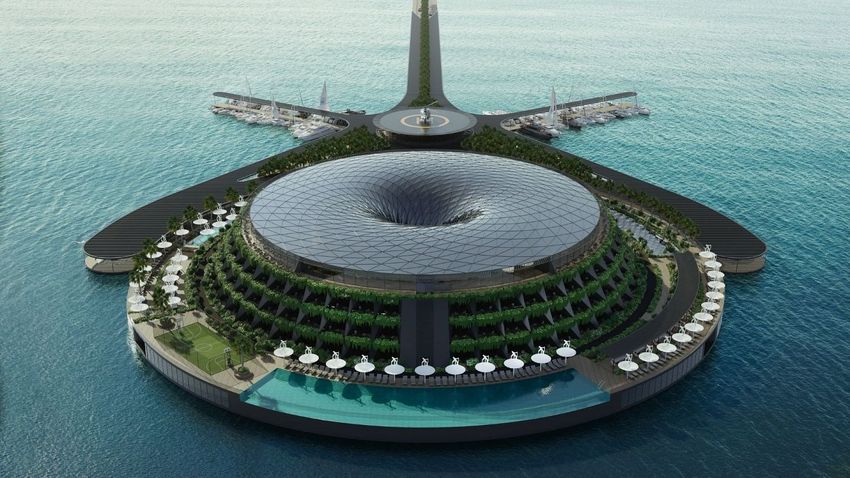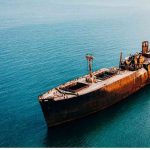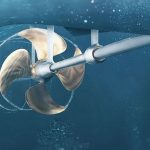Floating hotels and casinos are marvels of modern engineering, offering luxurious experiences on water while remaining stable and secure. But have you ever wondered how these massive structures stay in place despite waves, tides, and wind? 🌊 In this article, we’ll explore the science and technology that keep floating hotels and casinos anchored, ensuring a safe and steady experience for guests.
1. What Are Floating Hotels and Casinos? 🏨⚓
Floating hotels and casinos are structures designed to float on water, often found near coastal cities, riverbanks, or lakes. They offer all the amenities of traditional hotels and casinos, such as comfortable rooms, restaurants, entertainment venues, and gaming floors 🎲. Examples include luxury riverboat casinos in the United States and floating hotels in countries like Dubai and the Maldives.
While some floating hotels are permanently anchored, others are designed to move, offering scenic cruises while maintaining stability and safety.
2. The Science of Staying Afloat ⚓🌊
Floating hotels and casinos rely on the principles of buoyancy, which were first explained by the ancient Greek scientist Archimedes. According to Archimedes’ Principle, an object submerged in water experiences an upward force equal to the weight of the water it displaces. This force allows massive structures like ships and floating hotels to stay afloat.
However, staying afloat is just the first step. These structures must also remain stable and stationary, especially in areas with strong currents, tides, and winds. This is where advanced anchoring systems and stabilizers come into play.
3. Anchoring Systems: How Floating Hotels Stay in Place ⚓
Floating hotels and casinos use sophisticated anchoring systems to stay in place. The choice of system depends on the location, water depth, and environmental conditions. Here are the most common methods:
A. Permanent Anchors 🪝
- Large chains or cables are attached to anchors embedded in the seabed or riverbed. These anchors are designed to resist movement, ensuring the structure stays in place.
- Common types of anchors include stockless anchors (used for large vessels) and mushroom anchors (used in soft seabeds).
B. Mooring Lines 🧵
- Mooring lines are strong ropes or cables that connect the floating structure to fixed points onshore or underwater mooring buoys.
- The lines are arranged in multiple directions to counteract forces from waves, tides, and wind, preventing the structure from drifting.
C. Piling Systems 🏗️
- In shallow waters, floating hotels may be secured to pilings—large vertical poles driven into the seabed. The structure moves up and down with the tide while remaining fixed in position.
- Pilings are commonly used for floating hotels built close to shorelines, such as those in marinas or coastal resorts.
4. Dynamic Positioning Systems (DPS) 🛰️
For floating casinos and hotels that need to move, such as riverboat casinos or luxury cruise ships, Dynamic Positioning Systems (DPS) are essential. DPS uses computer-controlled thrusters to maintain the vessel’s position and orientation without anchors. The system continuously adjusts the thrusters based on real-time data from GPS satellites, sensors, and gyroscopes. This allows the vessel to remain stationary even in rough waters.
DPS is particularly useful in deep waters where traditional anchoring is impractical, such as offshore floating hotels or cruise ships that stop near scenic locations.
5. Stabilization Systems: Ensuring Comfort for Guests 🌊🚫
Stability is crucial for floating hotels and casinos, as guests expect a smooth and comfortable experience. To minimize rocking and swaying caused by waves, several stabilization systems are used:
- Ballast Tanks 💧: Large tanks filled with water are strategically placed within the structure. By adjusting the amount of water in each tank, operators can balance the vessel and reduce rolling.
- Stabilizer Fins 🦈: Retractable fins extend from the sides of the structure, reducing rolling by generating lift as they move through water.
- Gyroscopic Stabilizers 🌀: These advanced devices use spinning gyroscopes to counteract the motion of waves, reducing rocking without external fins.
6. Environmental Considerations 🌱
Floating hotels and casinos are designed to minimize their environmental impact. Modern anchoring systems are engineered to avoid damaging marine ecosystems, and advanced wastewater treatment systems prevent pollution. Additionally, some floating hotels use renewable energy sources such as solar panels ☀️ and energy-efficient systems to reduce their carbon footprint.
7. Examples of Floating Hotels and Casinos 🛳️🎰
- The Floatel, Sweden 🇸🇪: A floating hotel in Gothenburg that offers stunning waterfront views while being securely anchored to the harbor.
- The Sunborn Yacht Hotel, London 🇬🇧: A luxurious floating hotel moored in the Royal Victoria Dock, providing guests with a unique experience.
- Riverboat Casinos, USA 🇺🇸: Popular along the Mississippi River, these casinos are designed to resemble 19th-century paddle steamers, offering both gambling and scenic river views.
8. Conclusion ✅
Floating hotels and casinos are engineering marvels that combine luxury with the challenges of operating on water. By using advanced anchoring systems, Dynamic Positioning Systems, and stabilization technologies, these structures remain safe, stable, and comfortable, even in challenging conditions. As technology continues to advance, we can expect even more innovative and eco-friendly floating hotels and casinos in the future. 🌊🏨🎰


